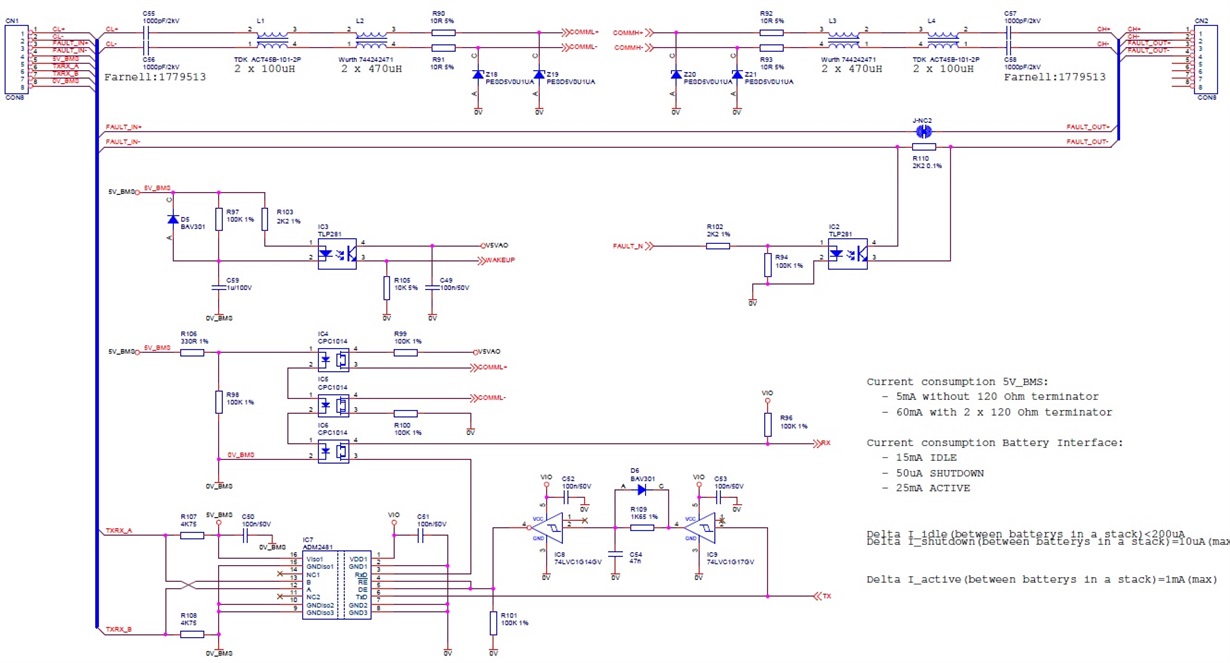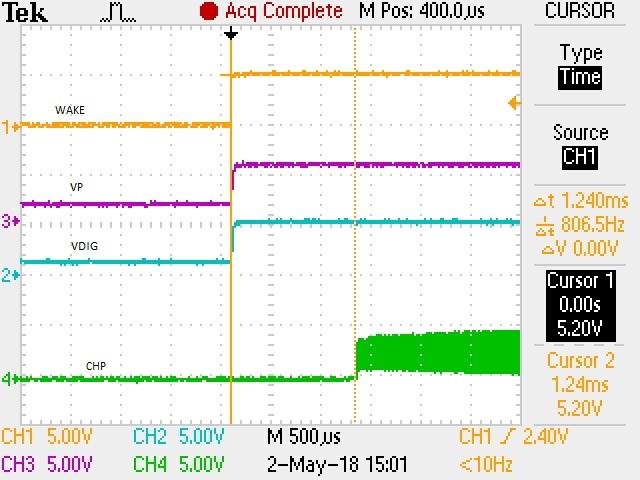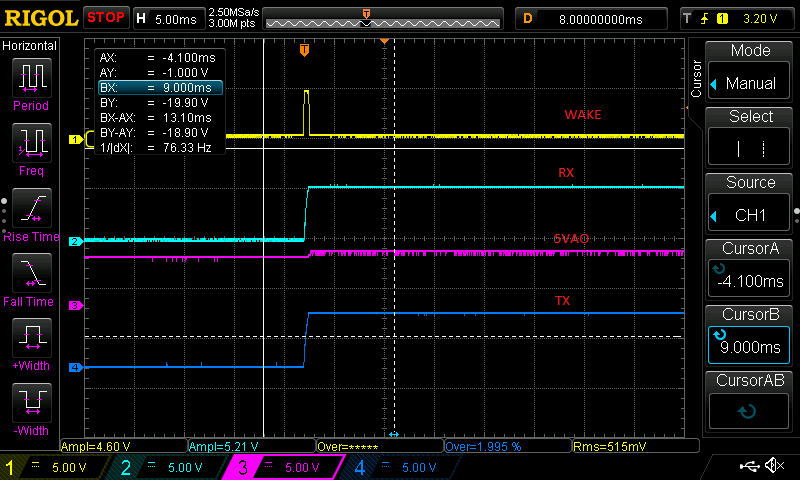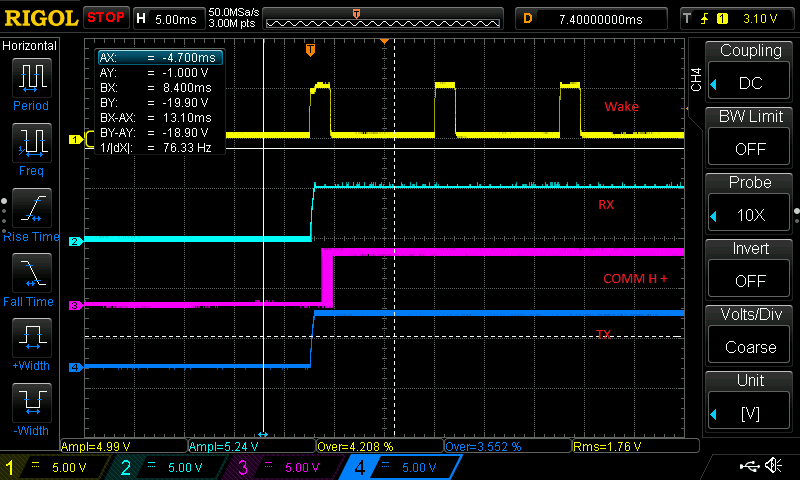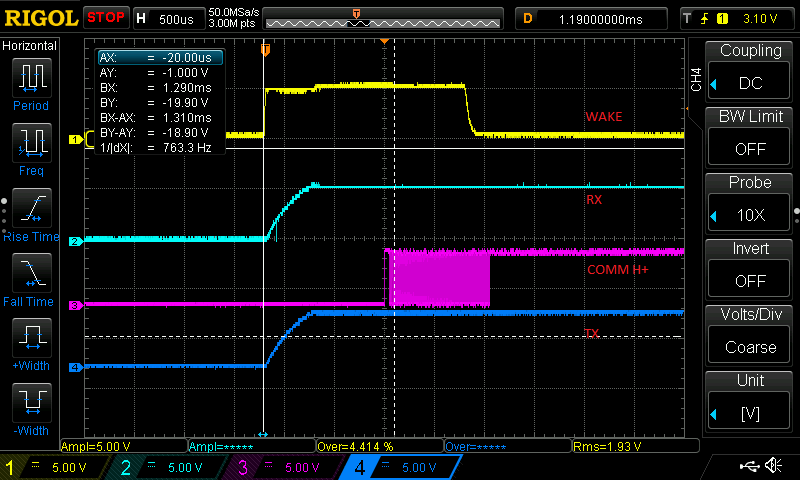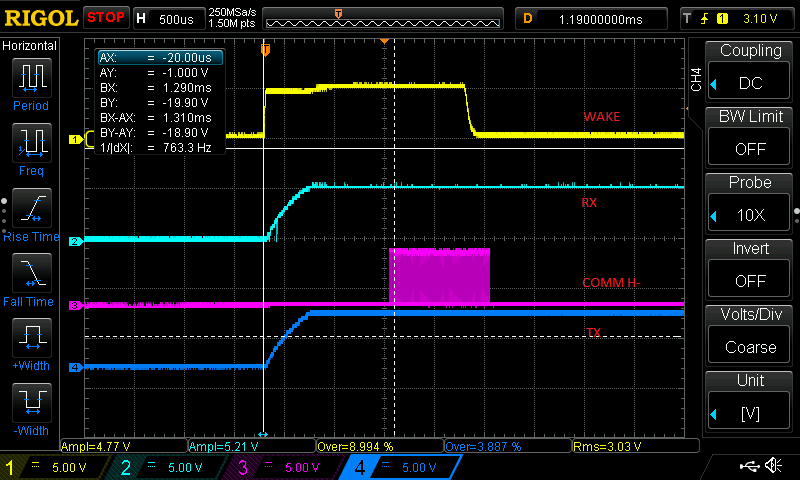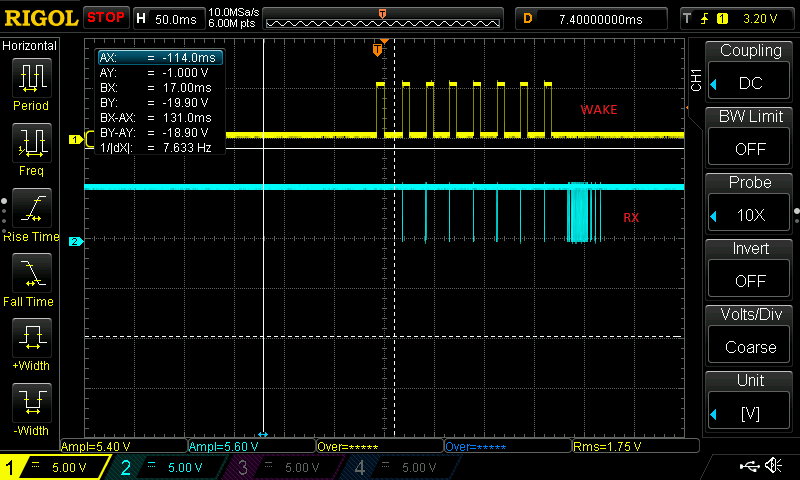Other Parts Discussed in Thread: BQ76PL455EVM
We made a design with the BQ76PL455 based on the EVM.
The BQ76PL455 is on the "secondary side" isolated from the "primary side" which contains the connection to another piece of equipment.
We made a design with the BQ76PL455 based on the EVM.
The BQ76PL455 is on the "secondary side" isolated from the "primary side" which contains the connection to another piece of equipment.
At the moment we power the primary side we see the battery monitor waking up. (VIO gets 5.3V).
When we start communicating with via the GUI from the EVM we see 1 byte is transmitted and immediately the battery monitor is shutting down. We now have to send a wakeup pulse again before we can retry. Each retry gives the same result.
When we slightly change the startup: We force wakeup high until the communication is established (window with the number of devices and address appears). The communication seems to be running without problems.
If we press the “send comm. Reset” button on the second tab of the GUI we experience the same problem as at startup. We se the battery monitor powering down.
Can you give us tips where to look at in order to get this fixed? We can keep the wakeup high at all times but then we cannot put the battery monitor into sleep. We would like to be able to put the battery monitor into sleep.


